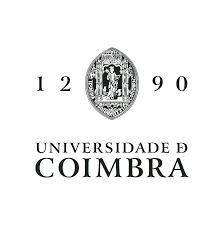- Compact style
- Indico style
- Indico style - inline minutes
- Indico style - numbered
- Indico style - numbered + minutes
- Indico Weeks View
Non-Perturbative QFT in Euclidean and Minkowski
→
Europe/Lisbon
E10.B
E10.B
Department of Physics
University of Coimbra
Portugal
, ,
Description
Most non-perturbative calculations in QFT are performed in Euclidean metric, even though physical space-time, in which observables are measured, has Minkowski metric. As long as non-perturbative Green’s functions have the same analytic structure as tree-level Green’s functions, transformations from Minkowski metric to Euclidean metric and back can be performed using the Wick rotation. However, in nonperturbative QFT it remains to be seen what the analytic structure is. Indeed, there are indications that the analytic structure of confined quark and gluon propagators is different from the tree-level propagators, and may not allow for a Kallen-Lehmann representation. If this is the case in QCD, then the naive Wick rotation is not allowed, hindering the calculation of physical observables which are most naturally defined in Minkowski metric such as distribution amplitudes (DAs) and generalized parton distributions (GPDs).
Our aim is to bring together experts in nonperturbative QFT in order to (1) compare and contrast calculations in Minkowski and Euclidean metric; (2) establish a firm connection between the analytic structure of (confined) propagators, as well as higher $n$-point functions, and numerical calculations; and (3) discuss the consequences of a nontrivial analytic structure of confined propagators for the calculations of physical observables.
To this end we are organising a 3-day workshop Sept 10 to 12, 2019, in Coimbra, Portugal, in which we bring together experts in different nonperturbative approaches to QFT, including but not limited to Lattice QCD, Dyson-Schwinger Equations, Functional Renormalization group, Nakanishi Integral Representation. The format of the workshop consists of a limited number of dedicated invited talks (5 or 6 per day), followed by a daily discussion session where everyone can participate. We hope that such a format encourages exchange of information between the participants and facilitates actual discussions. In particular, in the discussions we want to focus on comparing and contrasting different methods, and on the question how to reliably obtain results in Minkowski space, such us Light-Front observables, from Euclidean calculations (and vice versa).
There is no fee for participating in the workshop, and the local organisation will provide refreshments and coffee during the breaks! For those interested, there is the possibility of additional discussions on Friday Sept 13.
Please register if you are planning to attend the workshop.
Speakers
Ian Cloet (ANL, USA)
Attilio Cucchieri (USP, Brazil)
David Dudal (KU Leuven, Belgium)
Gernot Eichmann (U. Lisbon, Portugal)
Gastão Krein (U. Estadual Paulista, Brazil)
Peter Lowdon (Ecole Polytechnique, France)
Teresa Peña (U. Lisbon, Portugal)
Wayne Polyzou (U. Iowa, USA)
José Emílio Ribeiro (U. Lisbon, Portugal)
José Rodríguez-Quintero (U. Huelva, Spain)
Alexander Rothkopf (U. Stavanger, Norway)
Fabio Siringo (U. Catania, Italy)
Giovanni Salme (INFN Rome, Italy)
Vladimir Sauli (CAS, Czech Republic)
Jon-Ivar Skullerud (NUI Maynooth, Ireland)
Nicolas Wink (Heidelberg University, Germany)



Participants
Alexander Rothkopf
Alexandre Falcão
Alexandre Salas-Bernardez
Attilio Cucchieri
David Dudal
Enzo Leon Solis Gonzalez
Fabio Siringo
Gastao Krein
Gernot Eichmann
Giovanni Salme'
Guilherme Telo
Ian Cloet
Jan Horak
Jon-Ivar Skullerud
José Emílio Ribeiro
José Rodríguez Quintero
João Pacheco de Melo
João Rodrigues
Lee Loveridge
Markus Huber
Martin Roelfs
Meijian Li
Nicolas Wink
Orlando Oliveira
Pablo Pais
Paulo Silva
Peter Lowdon
Pieter Maris
Richard Williams
Teresa Peña
Tobias Frederico
Vladimir Sauli
Wayne de Paula
Wayne Polyzou
Contact